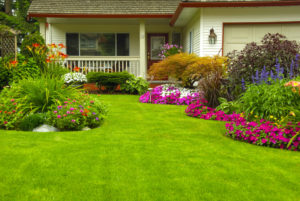- Community clubs enhance societal bonds and safety and require careful planning and understanding of local needs.
- Good design, inclusive programming, and proper facilities are essential to successful community clubs.
- Creating an exclusive member experience and regular, personalized communication fosters membership loyalty.
- Regularly maintaining the community club’s facilities and amenities ensures safety and longevity.
Community clubs play a pivotal role in fostering societal bonds, enhancing neighborhood safety, and promoting civic participation. The benefits of having a community club in your neighborhood are manifold.
According to a National Recreation and Park Association report, neighborhoods with community clubs see a 22% increase in social cohesiveness. This fosters a sense of belonging and trust among the residents.
Moreover, community engagement activities can lead to a 15% decrease in crime rates, as found by a study conducted by the Urban Institute. Community clubs help deter crime and imbue a sense of safety within the neighborhood by providing a platform for positive interaction and youth engagement.
However, building a community club will have its challenges. Here are some steps to consider when starting a community club.
Identify Your Community’s Needs and Wants

The activities and features of a community club should align with the locals’ interests, needs, and preferences. For example, the community club could consider incorporating an indoor play area or organizing regular kids’ activity sessions if most residents are families with young children.
Proper Design and Layout
Of course, everything starts with a strong foundation. When building a community club, finding the right architecture firm is crucial. The design and layout of the club should be functional, aesthetically pleasing, and adhere to any local regulations or zoning laws. Selecting from the best commercial architecture firms is essential to ensure that your vision for the community club is brought to life successfully.
Inclusive Programming
The community club should provide a diverse range of activities catering to all community members. For instance, fitness classes for adults, reading clubs for seniors, and arts and crafts workshops for children. This ensures that everyone feels welcomed and included, fostering a sense of belonging.
Facilities that Meet Community Needs
The facilities in a community club should be reflective of the local needs. The club could consider incorporating a garden or park if the community resides in an area with limited green spaces. Alternatively, if the community has a sizable elderly population, installing ramps and other accessible features would be ideal.
Feedback and Adaptation
Lastly, the community club needs to adapt and evolve based on feedback from its members continually. This might involve updating or changing activities, amending the facilities, or modifying the club’s rules and regulations. Doing so ensures the club remains relevant and valuable to its members.
Create an Exclusive Experience

Creating an exclusive experience for community club members is crucial as it adds value to the membership and elevates the overall appeal of the club. An exclusive experience can foster a sense of uniqueness and belonging that sets your community club apart, reinforcing that members are part of a unique entity.
Achieving this involves curating activities and facilities that cater to your community members’ specific needs and preferences. For instance, hosting exclusive events such as members-only workshops, speakers, or special gatherings can create a feeling of exclusivity.
Another practical approach is to provide premium amenities or privileges. This could take the form of priority booking for amenities, access to exclusive areas, or special discounts on club services.
It’s also essential to ensure that club communication is personalized and engaging. Regular newsletters highlighting upcoming events, member achievements, or essential updates can help members feel valued and connected.
Ensure Regular Maintenance
Regular maintenance of the community club facilities, amenities, and premises is paramount to ensure the club’s safety, functionality, and aesthetic appeal. A well-maintained club provides a pleasant environment for the members and extends the lifespan of facilities and equipment, saving potentially high replacement costs in the long run.
Maintenance tasks should ideally be divided into daily, weekly, monthly, and annual routines. Daily tasks include cleaning common areas, checking for immediate repair needs, and ensuring all equipment is in working order. Weekly and monthly duties could include a more in-depth inspection of club facilities, performing minor repairs, and addressing cleanliness issues beyond daily cleaning. Annual maintenance might involve more significant renovation or refurbishment projects, a comprehensive inspection of all club facilities, and updating any outdated or worn-out equipment.
Owners can enlist the help of a dedicated maintenance team or outsource these tasks to professional maintenance service providers. A systematic approach to maintenance, such as a scheduled maintenance plan, can assist in identifying potential issues before they escalate into costly repairs. Owners should also consider setting aside a budget for unexpected maintenance and upgrade needs, ensuring the club remains an attractive and safe place for members.
Final Thoughts
Establishing a community club can be a rewarding experience for both the members and the larger neighborhood. Careful planning, inclusive programming, proper maintenance, and creating a unique member experience are essential to consider when building a thriving community club. Following these steps, you can create a vibrant and welcoming space for your community to unite, form strong bonds, and enjoy meaningful interactions.













